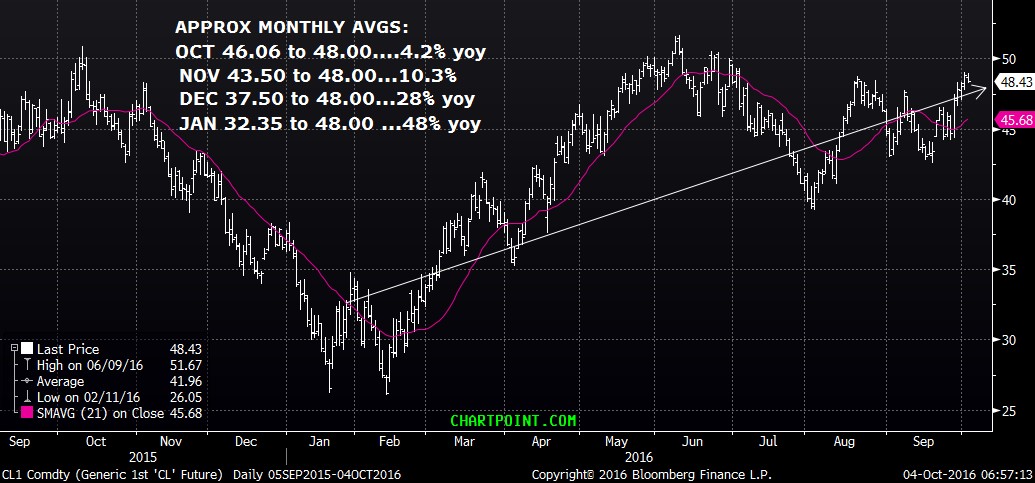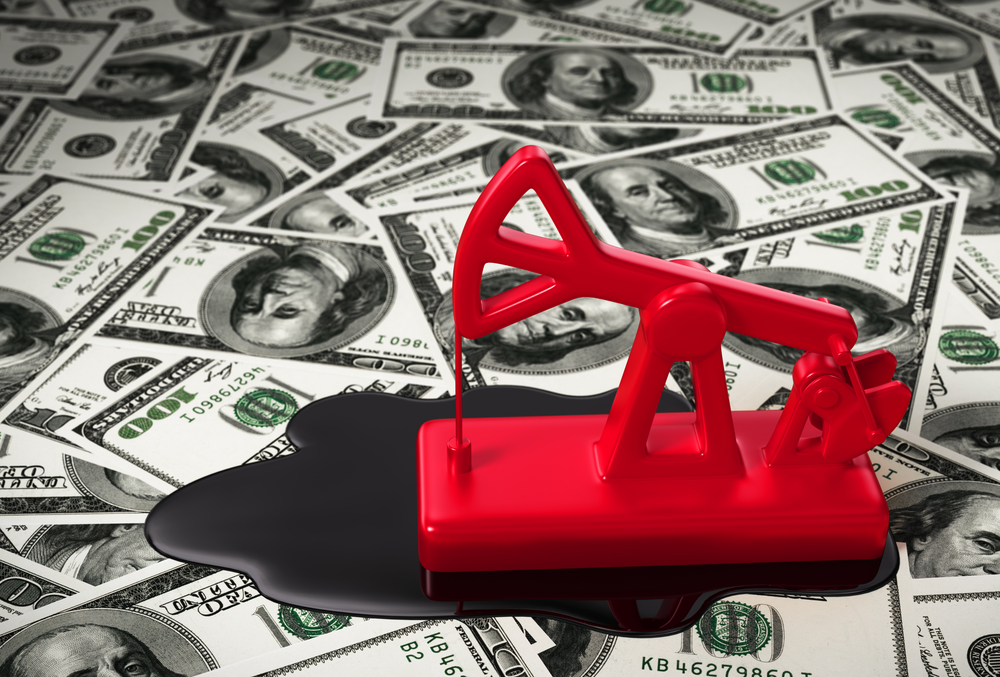October 4, 2016
The price of oil is of huge importance to the US economy. Sure, there have been great advances in alternative energy and electric cars, but oil figures very prominently into prices and into inflation expectations. You’ve probably heard just about every Fed official talk about the dual mandate of our central bank, referring to strong and stable employment and steady positive inflation with a goal of 2pct. You’ve probably heard many of the same officials say that with the unemployment rate at 4.9 pct, the jobs part of the equation has been solved, but that inflation remains stubbornly under target. This latter condition is about to change, in large measure due to the price of oil.
Throughout 2015 the price of oil slid, with wicked acceleration into the last few months of the year and into Jan/Feb as you can see on the attached chart. This chart is a continuous front month contract. Currently, the price of oil is approximately 49.00. With just a rough estimate we can see that the Oct 2015 avg price was around 46.00, and in Nov 43.50, Dec 37.50 and Jan 32.35. Let’s assume that oil simply moves sideways from here and holds around $48/bbl. That means yearly changes from the year ago averages will look like this: +4.2% in October, then +10.3% +28% and +48%!! Already a couple of market based inflation gauges reflect the idea of higher prices. For example the ten year treasury to tip (inflation indexed 10y) spread hit a new recent high of 164 bps and the 5 year/5 year forward inflation swap has recently firmed from 1.9% in August to 2.08% now. The Fed’s preferred inflation measure of Core PCE just came out last week at 1.7 pct. It has been on an uptrend and is approaching the Fed’s target of 2 pct.
One might ask whether it’s reasonable to think that oil will stay firm in a slowing global economy. Here are reasons I think it will. First, the Saudis are still a swing producer and now NEED the price to go higher. They have had to cut the pay of government servants and are under increasing pressure to cut the USD peg. They are even working with the Russians who share the same goal of higher oil prices.
It’s not that I think the global economy or even the US on its own is accelerating. It’s actually slowing. The point is that pure inertia will start to see oil working through the inflation data, with the likely implication being a steeper yield curve and perhaps some pressure on equities as fixed income yields provide increased competition to stocks.





